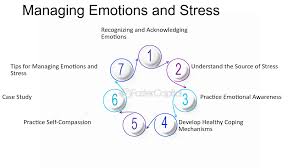Mind Over Mood Life is full of emotional highs and lows. Whether it’s the joy of achieving a goal or the frustration of facing setbacks, emotions are an integral part of being human. However, learning to manage these emotional fluctuations effectively is essential for maintaining mental well-being. In this article, we will explore practical techniques for taking control of your mood and fostering emotional resilience.
Understanding the Power of Thoughts
Our emotions are often influenced by our thoughts. A single negative thought can spiral into feelings of sadness or anger, while positive thinking can uplift our mood. Recognizing this connection is the first step toward managing emotions. When you feel overwhelmed, take a moment to identify the thoughts contributing to your emotional state. Ask yourself: Are these thoughts rational? Are they based on facts or assumptions?
 Practice Mindfulness
Practice Mindfulness
Mindfulness involves focusing on the present moment without judgment. By practicing mindfulness, you can observe your emotions without being controlled by them. Techniques such as deep breathing, meditation, or simply paying attention to your surroundings can help ground you when emotions run high.
Example Exercise:
- Find a quiet place to sit comfortably.
- Close your eyes and take a deep breath in through your nose, holding it for a few seconds before exhaling slowly through your mouth.
- Focus on the sensation of your breath and let any intrusive thoughts pass without engaging them.
Cognitive Behavioral Techniques
Cognitive Behavioral Therapy (CBT) offers tools to reframe negative thoughts and develop healthier patterns of thinking. One effective method is cognitive restructuring, which involves challenging irrational beliefs and replacing them with balanced perspectives.
Steps to Cognitive Restructuring:
- Identify the thought: Write down the negative thought that’s troubling you.
- Examine the evidence: Consider the evidence for and against this thought.
- Reframe the thought: Replace the negative thought with a more constructive one.
Cultivate Emotional Resilience
Emotional resilience is the ability to bounce back from challenges and adapt to adversity. Building resilience takes time, but simple habits can make a big difference:
- Maintain a support system: Surround yourself with people who uplift and encourage you.
- Engage in self-care: Regular exercise, a balanced diet, and sufficient sleep are foundational for emotional stability.
- Practice gratitude: Reflecting on things you’re grateful for can shift your focus from what’s going wrong to what’s going well.
Develop Healthy Coping Mechanisms
When emotions become overwhelming, it’s important to have strategies for coping in a healthy way. Avoid suppressing your feelings or resorting to unhealthy habits like overeating or substance use. Instead, consider activities such as journaling, talking to a trusted friend, or engaging in creative outlets like painting or music.
Seek Professional Support
If emotional ups and downs persist or become unmanageable, seeking help from a mental health professional can be invaluable. Therapists and counselors are trained to provide guidance and strategies tailored to your specific needs.
Conclusion
Managing your mood is not about eliminating negative emotions but learning to navigate them effectively. By understanding the connection between thoughts and feelings, practicing mindfulness, and adopting healthy coping strategies, you can build the resilience needed to face life’s challenges. Remember, emotional well-being is a journey, not a destination. Each step you take toward understanding and managing your emotions brings you closer to a more balanced and fulfilling life.